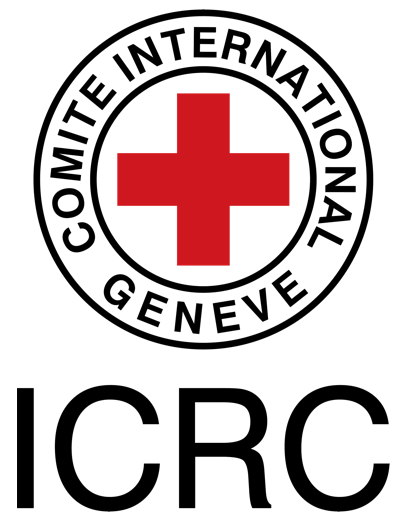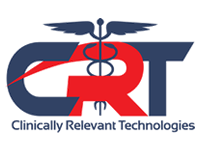Category:Course Pages
Pages in category "Course Pages"
The following 200 pages are in this category, out of 993 total.
(previous page) (next page)A
- A New Protocol for Plantar Heel Pain
- A Task Oriented Approach to Assessment and Training of Infant Sitting
- Academic Faculty
- Academic Integrity
- Access to Assistive Technology
- Access to Rehabilitation
- Achilles Rupture
- Achilles Tendinopathy Toolkit
- Achilles Tendinopathy Toolkit: Section A - Clinical Evaluation
- Achilles Tendinopathy Toolkit: Section B - Outcome Measures
- Achilles Tendinopathy Toolkit: Section C - Summary of Evidence and Recommendations for Interventions
- Achilles Tenotomy
- ACL Rehabilitation: Acute Management after Surgery
- ACL Rehabilitation: Re-injury and Return to Sport Tests
- ACL Rehabilitation: Rehabilitation Planning
- Acromioclavicular Joint Disorders
- Active Transportation and Planetary Health
- Activities for Training Infant Sitting
- Activities of Daily Living Performed by People with Spinal Cord Injury
- Acute Care Management of a Patient with Multiple Trauma
- Acute post-surgical management of the amputee
- Acute Responses to Exercise
- Adapting Communication to Different Populations
- Adaptive Seating for Children
- Adherence in Clubfoot Treatment
- Adolescent Patellofemoral Pain
- Advanced Dressing Selection for Burn Wound Injuries
- Advanced Gross Motor Skills in Children
- Aetiology, Symptoms and Clinical Classifications of Temporomandibular Disorders
- Age and Exercise
- Alberta Infant Motor Scale (AIMS)
- Altitude and Sport
- American Spinal Injury Association (ASIA) Impairment Scale
- Amputee Mobility Predictor
- Amputee Rehabilitation
- An Introduction to Augmentative and Alternative Communication
- An Introduction to Clearing the Lumbar Spine
- An Introduction to Environmental Physiotherapy
- An Introduction to Mindfulness
- An Introduction to Red Flags in Serious Pathology
- An Introduction to Sports Medicine
- An Introduction to Understanding Your Runner
- An Overview of Physiotherapy Assessment and Treatment of the Pelvic Floor
- An Overview of Physiotherapy in UK Prisons
- An Overview of Rehabilitation for Doctors
- An Overview of Rehabilitation for Nurses
- An Overview of Telehealth and Paediatrics
- Anatomy and Common Injuries of the Equine Forelimb
- Anatomy and Relevant Structures in Plantar Heel Pain
- Anatomy of the Canine Front Limb
- Anatomy of the Canine Spine
- Anatomy of the Pelvic Girdle
- Anatomy of the Pointe Shoe
- Anatomy of the Temperomandibular Joint
- Anatomy, Biomechanics and Regional Interdependence of the Thorax
- Ankle Fractures
- Ankle Syndesmosis Injuries
- Anterior Cruciate Ligament (ACL)
- Anterior Cruciate Ligament (ACL) - Structure and Biomechanical Properties
- Anterior Cruciate Ligament (ACL) Reconstruction
- Anterior Neck and Cervicogenic Headaches
- Anticipatory Care for Long Term Conditions in Physiotherapy
- Application of the New Protocol for Plantar Heel Pain
- Applied Animal Physiotherapy Ethics
- Applying the ICF in Health Policies and Administration
- Appraising the Quality of Knowledge Resources
- Arthrogryposis Multiplex Congenita
- Assessing Children with Clubfoot
- Assessing Muscle Length
- Assessing Muscle Strength
- Assessing Range of Motion
- Assessment and Exercise Interventions in Early and Middle Childhood Development
- Assessment and Questionnaires for Children with Pain
- Assessment and Treatment of the Thoracic Spine
- Assessment Before Moving and Handling
- Assessment Considerations in Disasters and Conflicts
- Assessment of Fitness for Return to Work
- Assessment of Foot Neuropathies
- Assessment of Infection in Burn Injuries
- Assessment of Overuse Injury in Runners
- Assessment of Plantar Heel Pain - A Literature Review
- Assessment of Running Biomechanics
- Assessment of Spinal Cord Injury
- Assessment of Tennis Elbow
- Assessment of the amputee
- Assessment of the Canine Patient
- Assessment of the Equine Spine
- Assessment of Traumatic Brain Injury
- Assessment of Wound Infection
- Assignment Guidelines
- Assistive Technology: Vision Products
- Atypical Clubfoot
- Atypical Presentation of Covid in the Elderly
- Autism Spectrum Disorder
- Autonomic Nervous System and Spinal Cord Injury
- Availability, Accessibility, Acceptability and Quality Framework
B
- Back and Upper Leg Regional Pain and Gait Deviations
- Balancing Time and Workload
- Bangla Clubfoot Tool
- Barriers to Physical Activity
- Barthel Index
- Basic Anatomy of the Dancer's Ankle and Foot
- Basic Canine Handling, Restraint and Training
- Basic Equine Handling, Restraint and Training
- Basic Foot and Ankle Anatomy - Bones and Ligaments
- Basic Foot and Ankle Anatomy - Muscles and Fascia
- Basic Foot and Ankle Anatomy - Neural and Vascular
- Basics of Clinical Education
- Behaviour Change
- Behavioural Approaches to Pain Management
- Benefits of Physical Activity
- Benefits of Rehabilitation
- Benign Joint Hypermobility Syndrome
- Best Practice in Developmental Skills Training in Early Intervention
- Biodiversity and Physiotherapy
- Biomechanics and Dynamics of the Pelvic Girdle
- Biomechanics In Sport
- Biomechanics of the Dancer’s Ankle and Foot
- Biomechanics of the Hip
- Biopsychosocial Model
- Bladder Considerations with Spinal Cord Injury
- Blood Flow Restriction Training
- Blood Physiology
- Bone
- Bone Healing
- Bone Marrow Lesions
- Bowel Considerations with Spinal Cord Injury
- Bracing for Clubfoot
- Brain Anatomy
- Brief Interventions for Physical Activity
- Burn Injury Management Considerations for Rehabilitation Professionals
- Burn Physiotherapy
- Burn Wound Assessment
- Burn Wound Healing Considerations and Recovery Care Interventions
- Burn Wound Injury Dressing Selection
- Burn Wound Treatment: Cleansing and Solutions
C
- Calgary-Cambridge Guide to Communication in the Physical Examination
- Calgary-Cambridge Guide to Explanation and Planning
- Calgary-Cambridge Guide to the Medical Interview - Closing the Session
- Calgary-Cambridge Guide to the Medical Interview - Initiating the Session
- Canadian C-Spine Rule
- Canes
- Canine Ethology - Understanding Dog Behaviour
- Canine Hindlimb Anatomy
- Canine Nutrition and Obesity
- Cardiac Rehabilitation
- Cardiovascular Training in Spinal Cord Injury
- Case Study - Acquired Brain Injury in Disasters and Conflicts
- Case Study - Amputation in Disasters and Conflicts
- Case Study - Burns in Disasters and Conflicts
- Case Study - Electrical Burn in Disasters and Conflicts
- Case Study - Fractures in Disasters and Conflict
- Case Study - Lower Limb Peripheral Nerve Injury in Disasters and Conflicts
- Case Study - Spinal Cord Injury in Disasters and Conflicts
- Case Study - Upper Limb Peripheral Nerve Injury in Disasters and Conflicts
- Template:Case Study for Early Rehabilitation in Disasters and Conflicts
- Case Study: Exercise in MS
- Casting for Clubfoot
- Central Sensitisation
- Central Slip Extensor Tendon Injuries
- Cerebral Palsy Aetiology and Pathology
- Cerebral Palsy General Assessment
- Cerebral Palsy Interventions
- Cervicogenic dizziness: screening
- Challenges in Delivering Rehabilitation in Disasters and Conflicts
- Characteristics and Categories of Risky Play
- Characteristics and Identification of Wound Types: Arterial and Venous Insufficiency Ulcers
- Characteristics and Identification of Wound Types: Neuropathic Wounds
- Characteristics and Identification of Wound Types: Pressure Injuries and Non-healing Surgical Wounds
- Child Health Conditions and Migration
- Childbirth and the Pelvic Floor
- Chronic Cardiopulmonary Adaptations to Exercise
- Chronic Musculoskeletal Adaptations to Exercise
- Chronic Pain
- Classification and Prioritisation of Multiple Gait Deviations
- Classification of Lumbar Spine Impairments
- Classification of Shoulder Pain
- Classification of Traumatic Brain Injury
- Clinical Biomechanics in Sport
- Clinical Decision Making in Physiotherapy Practice
- Clinical Education Components
- Clinical Guidelines
- Clinical Reasoning and Pathologies of the Thoracic Spine
- Clinical Reflection
- Clinical Triaging Considerations for Telehealth
- Co-morbidities and Extra-articular Manifestations of Spondyloarthropathy
- Coaching and Mentoring
- Colles' Fracture Post Operative Rehabilitation Programme from Week 6
- Colles’ Fracture Post Operative Rehabilitation Protocol
- Coma Recovery Scale (Revised)
- Common Errors in Clubfoot Management
- Common Hip Pathologies- Functional Impairments and Management
- Common Women's Pelvic Health Conditions
- Communication and Children with Cerebral Palsy
- Communication in Early Intervention
- Communication Skills
- Communication Style and Personality
- Communication: The Most Potent Tool In The Box
- Comparative Animal Physiotherapy Modalities






